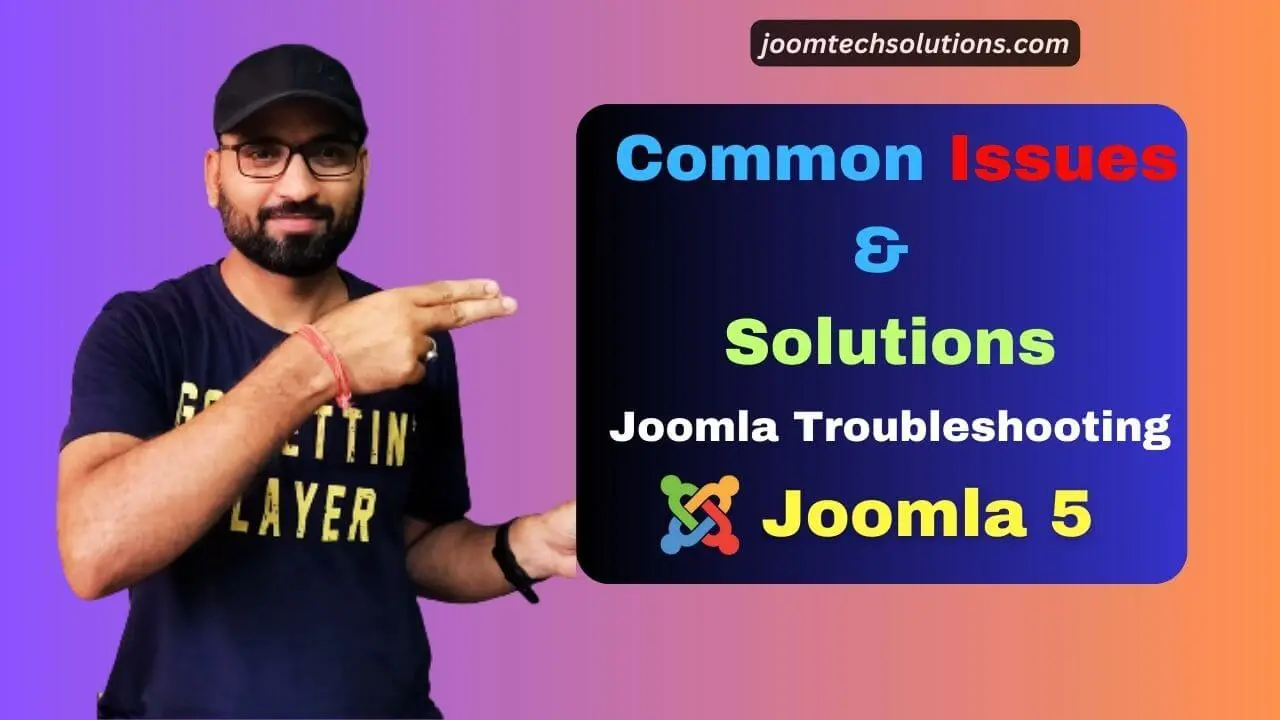Joomla is a powerful tool that helps millions of people build websites. but, even the best tools can have problems sometimes. If your Joomla website isn’t working properly, don’t worry!
This guide will help you fix common issues and restore your website online. Here are some basic steps to troubleshoot common Joomla problems and find solutions.
Step 1: Identifying the problem on the Joomla website:
The first step is pinpointing the exact issue you’re facing. Here are some common symptoms:
- Error messages: Joomla displays various error messages, such as “500 Internal Server Error” or “404 Page Not Found.” These messages often provide clues about the root cause of the problem.
- Blank pages: Your website may display a blank page instead of the expected content. This could be due to various factors, including plugin conflicts, template issues, or database errors.
- Slow loading times: If your website takes too long to load, it could be due to database issues, inefficient code, or outdated extensions.
- Security vulnerabilities: Joomla websites are susceptible to security breaches. It’s crucial to stay updated and implement security measures to protect your website.
Learn more: Tag Your Way to Success: Mastering Tags in Joomla 5
Step 2: Troubleshooting Tips for Joomla CMS
Once you’ve identified the problem, you can start troubleshooting. Here are some general steps to follow:
- Backup your website: Create a complete website backup before making any changes. This will allow you to restore your site if something goes wrong. So you can create a backup using akeeba backup or use Cpanel to create a zip file of all files and export the database separately.
- Check for updates: Ensure you’re using the latest version of Joomla core, extensions, and templates. Outdated software can lead to vulnerabilities and compatibility issues.
- Disable plugins and modules: If you suspect a plugin or module is causing the problem, try disabling them individually to see if the issue resolves.
- Clear the cache: Joomla caches website data to improve performance. Sometimes, a corrupted cache can cause problems. Try clearing the cache to see if it helps.
- Check the error logs: Joomla logs errors and warnings that can provide valuable insights into the problem. Check the error logs for clues about the issue.
- Seek help from the community: If you’re stuck, don’t hesitate to contact the Joomla community for help. There are various forums and online resources where you can get assistance from experienced Joomla users and developers.
Step 3: Common Issues and Solutions:
Here are some specific issues you might encounter and their solutions:
- White Screen of Death (WSoD): This is often caused by a fatal PHP error. Check the error logs for details and try disabling plugins or switching to a default template.
- 500 Internal Server Error: This can be caused by various factors, including server issues, incorrect file permissions, or corrupted files. Check your server logs and ensure file permissions are set correctly.
- 404 Page Not Found: This indicates that the requested page doesn’t exist. Check for broken links, missing content, or incorrect URL structures.
- Database connection errors usually occur due to incorrect database credentials or server issues. Verify your database settings and contact your hosting provider if needed.
Learn more: Mastering the Basics: Joomla 5 Tutorial for Beginners
Remember:
- Always back up your website before making any changes.
- Start with the easiest solution and move on to more complex troubleshooting steps.
- Don’t hesitate to get help from the Joomla community if you need assistance.

